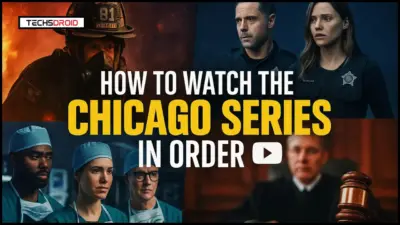Have you ever found yourself completely lost trying to figure out where to start with the Chicago franchise? Trust me, you’re not alone. With four interconnected series spanning over a decade, navigating the One Chicago universe can feel like solving a complex puzzle. But here’s the thing – when you watch these shows in the right order, the experience becomes absolutely magical.
I’ve been a devoted fan since Chicago Fire first premiered in 2012, and I can tell you that watching these series chronologically transforms your viewing experience entirely. You’ll catch character developments, understand relationship dynamics, and appreciate crossover storylines in ways that simply aren’t possible when you jump around randomly.
In this comprehensive guide, I’ll walk you through everything you need to know about watching Chicago Fire, Chicago P.D., Chicago Med, and Chicago Justice in the perfect order. Whether you’re a complete newcomer or someone looking to rewatch the entire franchise properly, this guide will become your roadmap to the interconnected world of Chicago’s finest first responders.
By the end of this article, you’ll have a clear understanding of the chronological viewing order, essential crossover episodes, character connections, and practical tips for diving into this incredible television universe. Let’s get started on this journey through the streets, firehouses, hospitals, and courtrooms of Chicago.
Understanding the Chicago Franchise Universe
Dick Wolf, the mastermind behind the Law & Order franchise, created something truly special when he launched the Chicago universe. Unlike typical spin-offs that exist independently, Wolf designed these series to function as interconnected pieces of a larger storytelling puzzle. Each show focuses on different aspects of Chicago’s emergency services while maintaining shared characters, locations, and storylines.
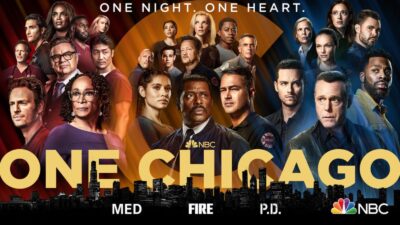
The genius of this approach lies in how naturally these worlds overlap in real life. Firefighters, police officers, medical personnel, and legal professionals work together daily in major cities, so it makes perfect sense that their fictional counterparts would share the same narrative space. Molly’s Bar, owned by three firefighters from Firehouse 51, serves as the central meeting place where characters from all series gather, creating a unifying thread throughout the franchise.
What makes the One Chicago experience unique is the concept of crossover episodes. These aren’t just cameo appearances or brief character visits – they’re fully integrated storylines that span multiple shows, sometimes requiring viewers to watch episodes from different series to get the complete story. When a major incident occurs in Chicago, it affects everyone: firefighters respond to the emergency, police investigate the cause, medical teams treat the victims, and prosecutors handle the legal aftermath.
The timeline and premiere dates of each series are crucial to understanding the proper viewing order. Chicago Fire premiered in October 2012, establishing the foundation of the universe. Chicago P.D. followed in January 2014, spinning off from a backdoor pilot episode in Fire. Chicago Med joined the lineup in November 2015, also introduced through a Fire episode. Finally, Chicago Justice had a brief run in 2017 before being cancelled after one season.
This chronological development means that watching in proper order allows you to experience the universe as it was originally intended to unfold. You’ll see how Antonio Dawson transitions from Chicago Fire to become a key player in Chicago P.D., witness the introduction of Gaffney Chicago Medical Center through the eyes of the firefighters, and understand the legal ramifications of cases that begin in the other series.
Complete Chicago Series Watch Order Guide
The Foundation: Chicago Fire (2012-Present)
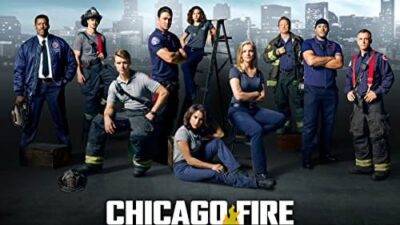
Chicago Fire serves as the cornerstone of the entire franchise, and for good reason. This series follows the brave men and women of Firehouse 51, led by Chief Wallace Boden (Eamonn Walker). The show centers around Lieutenant Matthew Casey (Jesse Spencer) and Lieutenant Kelly Severide (Taylor Kinney), whose friendship and professional partnership anchor much of the series’ emotional core.
What makes Chicago Fire essential viewing is how it establishes the world-building elements that carry throughout the entire franchise. Molly’s Bar, co-owned by firefighters Hermann, Otis, and Dawson, becomes the social hub where characters from all series eventually gather. The show also introduces us to Gabby Dawson (Monica Raymund), whose brother Antonio becomes a central figure in Chicago P.D..
The series excels at balancing high-stakes emergency situations with deeply personal character development. You’ll follow paramedics Gabriela Dawson and Sylvie Brett (Kara Killmer) as they save lives, witness the evolution of Joe Cruz (Joe Minoso) from candidate to seasoned firefighter, and experience the leadership challenges faced by Chief Boden.
Key storylines that connect to other series include the introduction of Intelligence Unit members, medical emergencies that lead to Gaffney Chicago Medical Center, and criminal cases that require police intervention. The show’s commitment to authentic firefighting scenarios, combined with compelling personal relationships, creates a solid foundation for understanding how emergency services interconnect in a major city.
The Expansion: Chicago P.D. (2014-Present)

Chicago P.D. emerged from Chicago Fire through a brilliant backdoor pilot episode titled “Let Her Go.” This series focuses on the 21st District of the Chicago Police Department, specifically the elite Intelligence Unit led by the controversial but effective Sergeant Hank Voight (Jason Beghe).
The show’s connection to Chicago Fire runs deeper than shared geography. Antonio Dawson (Jon Seda), brother of firefighter Gabby Dawson, serves as a key bridge between the two series. His character development from Fire to P.D. demonstrates how the franchise uses character transitions to maintain continuity while expanding the universe.
Detective Jay Halstead (Jesse Lee Soffer) brings another family connection to the franchise, as his brother Dr. Will Halstead becomes a central character in Chicago Med. The Intelligence Unit also includes Detective Erin Lindsay (Sophia Bush), Detective Kim Burgess (Marina Squerciati), and Detective Adam Ruzek (Patrick John Flueger), each bringing unique skills and personal stories to the team.
What sets Chicago P.D. apart is its willingness to explore the moral complexities of police work. Voight’s methods often blur ethical lines, creating tension within the unit and providing rich material for character development. The show doesn’t shy away from controversial topics, making it essential viewing for understanding how law enforcement intersects with the other emergency services in the One Chicago universe.
The Medical Addition: Chicago Med (2015-Present)

Chicago Med completed the trilogy of essential emergency services when it premiered in 2015. Set in the fictional Gaffney Chicago Medical Center, the series follows doctors, nurses, and medical staff as they handle everything from routine procedures to mass casualty events that often originate in the other series.
The show’s integration with existing series was seamless, largely due to careful character development and logical crossover opportunities. Dr. Will Halstead (Nick Gehlfuss), brother of Chicago P.D.’s Jay Halstead, serves as a primary connection point between the medical and law enforcement worlds. Dr. Connor Rhodes (Colin Donnell) and Dr. Sarah Reese (Rachel DiPillo) provide the medical expertise, while Nurse April Sexton (Yaya DaCosta) and Dr. Natalie Manning (Torrey DeVitto) handle much of the patient care.
Sharon Goodwin (S. Epatha Merkerson), the hospital’s administrator, often finds herself coordinating with other city departments during major emergencies. Her character provides crucial administrative perspective on how hospitals interact with fire departments, police, and legal systems during crisis situations.
The medical cases in Chicago Med frequently stem from incidents that begin in Chicago Fire or Chicago P.D., creating natural crossover opportunities. When firefighters rescue victims from a burning building, those patients end up at Gaffney. When police officers are injured in the line of duty, they receive treatment from the Med team. This interconnection makes the medical series feel like a natural extension of the existing universe rather than a forced addition.
The Legal Chapter: Chicago Justice (2017)
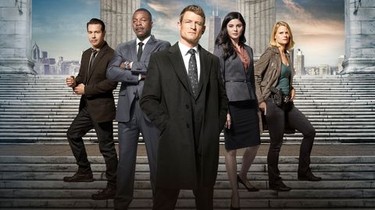
Chicago Justice represented Dick Wolf’s attempt to complete the full cycle of emergency services by adding the legal system to the One Chicago universe. The series followed prosecutors and investigators at the Cook County State’s Attorney’s Office, led by State’s Attorney Peter Stone (Philip Winchester) and Investigator Antonio Dawson, who transferred from Chicago P.D..
Although Chicago Justice only lasted one season, it played a crucial role in demonstrating how legal proceedings connect to the work done by firefighters, police, and medical personnel. The series showed how cases that begin with emergency responses eventually make their way through the court system, providing closure to storylines that span multiple series.
Assistant State’s Attorney Anna Valdez (Monica Barbaro) and Investigator Laura Nagel (Joelle Carter) worked alongside Stone and Dawson to prosecute cases that often had their origins in the other Chicago series. The show’s cancellation after one season was disappointing for fans who appreciated the complete picture it provided of Chicago’s emergency and legal systems.
Despite its brief run, Chicago Justice episodes remain important for understanding certain crossover storylines and character developments, particularly for Antonio Dawson’s character arc. The series also featured significant crossover events that tied together all four shows, making it essential viewing for completionist fans.
Season-by-Season Chronological Viewing Order
Early Years (2012-2014): Building the Foundation
The journey begins with Chicago Fire Seasons 1 and 2, which you can watch as standalone content without worrying about other series. These early seasons establish the core characters, relationships, and tone that will carry throughout the entire franchise. Season 1 introduces us to Firehouse 51 and the complex dynamics between Casey, Severide, and their crews.
During Chicago Fire Season 1, pay special attention to episode 23, titled “Let Her Go,” which serves as the backdoor pilot for Chicago P.D. This episode introduces Hank Voight and gives viewers their first taste of how the Intelligence Unit operates. While you don’t need to understand P.D. to enjoy this episode, it becomes much more significant when you later watch the police series.
Chicago Fire Season 2 continues building the foundation while introducing more elements that will become important in later series. The relationship between Gabby Dawson and Matthew Casey develops significantly, and we see more of Antonio Dawson, who will become crucial to Chicago P.D.. Episode 20 of Season 2 features the first major crossover with Chicago P.D., making it a pivotal moment in franchise history.
These early seasons also establish Molly’s Bar as the central social hub for the franchise. Watch for scenes that take place at Molly’s, as these locations will become increasingly important as more characters from other series begin appearing. The bar serves as neutral territory where firefighters, police officers, medical personnel, and eventually legal professionals can interact outside their professional environments.
| Season | Series | Year | Key Episodes | Notes |
|---|---|---|---|---|
| 1 | Chicago Fire | 2012-2013 | Episode 23: “Let Her Go” | Backdoor pilot for Chicago P.D. |
| 2 | Chicago Fire | 2013-2014 | Episode 20: Crossover with P.D. | First major crossover event |
The Two-Show Era (2014-2015): Expanding the Universe
2014 marked a turning point for the franchise with the premiere of Chicago P.D. Now you need to start alternating between series to get the full experience. Begin with Chicago P.D. Season 1, which picks up immediately after the backdoor pilot episode from Chicago Fire.
The integration between Chicago Fire Season 3 and Chicago P.D. Season 1 is where the franchise truly begins to shine. Antonio Dawson transitions from occasional appearances in Fire to becoming a main character in P.D., and his sister Gabby continues her development as a paramedic-turned-firefighter candidate.
Chicago Fire Season 3 introduces several elements that become crucial for Chicago Med. Episode 19, titled “I Am the Apocalypse,” serves as the backdoor pilot for the medical series, introducing Dr. Will Halstead and Gaffney Chicago Medical Center. This episode is essential viewing because it establishes how the hospital fits into the existing universe.
During this period, crossover episodes become more frequent and sophisticated. The shows begin sharing not just characters but entire storylines that require viewers to watch episodes from both series to understand the complete narrative. Chicago Fire Season 3, Episode 21 and Chicago P.D. Season 2, Episode 20 form a significant crossover event that also includes Law & Order: SVU.
The character development during this era is particularly strong. Erin Lindsay’s relationship with Voight provides insight into his character beyond his tough exterior, while Jay Halstead establishes himself as a key member of the Intelligence Unit. On the Fire side, Gabby Dawson’s journey from paramedic to firefighter candidate creates compelling drama and demonstrates the show’s commitment to character growth.
The Three-Show Period (2015-2017): Peak Complexity
The addition of Chicago Med in 2015 created the most complex viewing period for the franchise. Now you’re juggling three concurrent series, each with their own storylines while maintaining shared universe elements. Chicago Med Season 1 premieres alongside Chicago Fire Season 4 and Chicago P.D. Season 3.
This era features some of the most ambitious crossover events in the franchise’s history. The three-part crossover spanning Chicago Fire Season 5, Episode 15, Chicago P.D. Season 4, Episode 16, and Chicago Justice Season 1, Episode 1 represents the pinnacle of One Chicago storytelling. This event, centered around a warehouse fire that kills 38 people including Olinsky’s daughter, demonstrates how a single incident affects all aspects of the city’s emergency services.
Chicago Med’s integration feels natural because medical emergencies are a logical extension of fire and police work. Dr. Will Halstead provides the family connection to Chicago P.D. through his brother Jay, while Dr. Connor Rhodes and Dr. Sarah Reese handle the complex medical cases that often result from incidents in the other series.
Chicago Justice enters the picture in 2017, completing the cycle from emergency response to legal resolution. Antonio Dawson’s transfer from Chicago P.D. to the State’s Attorney’s Office provides continuity while allowing the character to grow in new directions. The legal series shows how cases that begin with firefighters and police eventually make their way through the court system.
| Season | Chicago Fire | Chicago P.D. | Chicago Med | Chicago Justice | Year |
|---|---|---|---|---|---|
| 4/3/1/- | Season 4 | Season 3 | Season 1 | – | 2015-2016 |
| 5/4/2/1 | Season 5 | Season 4 | Season 2 | Season 1 | 2016-2017 |
Current Era (2017-Present): Streamlined Excellence
Following the cancellation of Chicago Justice, the franchise settled into a streamlined three-show format that continues today. This period features more sophisticated storytelling, with annual crossover events that have become appointment television for fans. The shows air consecutively on Wednesday nights, making it easier for viewers to follow crossover storylines.
Recent seasons have featured major crossover events like the “Infection” trilogy (Chicago Fire Season 8, Episode 4, Chicago Med Season 5, Episode 4, and Chicago P.D. Season 7, Episode 4), which dealt with a deadly bacteria outbreak affecting the entire city. These events showcase how the franchise has perfected the art of interconnected storytelling.
The 2025 crossover event “In the Trenches” demonstrates the franchise’s continued commitment to ambitious storytelling. This three-part event airs in the order Chicago Fire, Chicago Med, and Chicago P.D., showing how a single emergency situation affects all three departments. The episode titles (“In the Trenches: Part I,” “Part II,” and “Part III”) make it clear that this is a unified story requiring viewers to watch all three episodes.
Character development during this era has been particularly strong. Kelly Severide’s relationship with Stella Kidd (Miranda Rae Mayo) has become a central storyline in Chicago Fire, while Chicago P.D. has explored the personal costs of police work through characters like Kim Burgess and Adam Ruzek. Chicago Med has tackled complex medical ethics through storylines involving Dr. Will Halstead and Dr. Natalie Manning.
Essential Crossover Episodes Guide
Understanding crossover episodes is crucial for getting the full One Chicago experience. These episodes aren’t just fun extras – they’re integral parts of the storytelling that often contain major character developments and plot points that affect future episodes across all series.
Major Crossover Events
The most significant crossover events require watching multiple episodes across different series to understand the complete story. The 2017 three-part crossover (“Deathtrap,” “Emotional Proximity,” and “Fake”) remains one of the most emotionally impactful storylines in the franchise. This event begins with a warehouse fire in Chicago Fire, continues with the Intelligence Unit’s investigation in Chicago P.D., and concludes with the legal proceedings in Chicago Justice.
The “Infection” trilogy from 2019 showcases how the franchise handles city-wide emergencies. Chicago Fire Season 8, Episode 4 introduces the bacterial outbreak, Chicago Med Season 5, Episode 4 shows the medical response, and Chicago P.D. Season 7, Episode 4 reveals the criminal investigation behind the incident. Each episode can be watched independently, but the full impact only comes from viewing all three.
Backdoor pilot episodes deserve special attention because they introduce new series within existing shows. Chicago Fire’s “Let Her Go” introduces Chicago P.D., “I Am the Apocalypse” introduces Chicago Med, and Chicago P.D.’s “Justice” introduces Chicago Justice. These episodes are essential viewing because they establish how new series fit into the existing universe.
Character-Focused Crossovers
Some crossover episodes focus primarily on character development rather than major incidents. These episodes often feature characters from one series appearing in another for personal reasons rather than professional emergencies. Kelly Severide’s romantic relationships with characters from Chicago P.D. and Chicago Med create natural crossover opportunities that feel organic rather than forced.
The Halstead brothers provide ongoing crossover potential between Chicago P.D. and Chicago Med. Episodes featuring both Jay and Will Halstead often explore family dynamics while advancing storylines in both series. Their relationship adds emotional depth to crossover episodes and helps maintain continuity between the police and medical series.
Antonio Dawson’s character arc spans multiple series, making his appearances essential viewing for understanding character development across the franchise. His transition from Chicago Fire to Chicago P.D. to Chicago Justice demonstrates how the franchise uses character movement to maintain connections between series.
| Crossover Event | Episodes | Year | Type |
|---|---|---|---|
| Warehouse Fire | Fire S5E15, P.D. S4E16, Justice S1E1 | 2017 | Three-part |
| Infection Outbreak | Fire S8E4, Med S5E4, P.D. S7E4 | 2019 | Three-part |
| In the Trenches | Fire S13E?, Med S10E?, P.D. S12E? | 2025 | Three-part |
Standalone vs. Multi-Part Crossovers
Standalone crossover episodes feature characters from multiple series but tell complete stories within single episodes. These are easier for casual viewers to follow but still provide the interconnected universe feeling that makes the franchise special. Examples include episodes where Intelligence Unit members appear at Molly’s Bar or when Gaffney medical staff treat injured firefighters.
Multi-part crossovers require commitment from viewers but provide the most rewarding experience. These events often span several weeks and require watching episodes from multiple series in specific order. The payoff is worth the effort, as these crossovers typically feature the most dramatic storylines and significant character developments in the franchise.
Character Connection Map
The One Chicago universe thrives on character connections that span multiple series. Understanding these relationships enhances your viewing experience and helps explain why certain crossover episodes feel so natural and emotionally resonant.
Family Connections
The Dawson siblings represent the franchise’s first major family connection. Gabby Dawson (Monica Raymund) serves as a paramedic and later firefighter in Chicago Fire, while her brother Antonio Dawson (Jon Seda) works as a detective in Chicago P.D. and later as an investigator in Chicago Justice. Their relationship provides ongoing crossover opportunities and demonstrates how family ties connect different emergency services.
The Halstead brothers create another crucial family link. Dr. Will Halstead (Nick Gehlfuss) works at Gaffney Chicago Medical Center in Chicago Med, while his brother Detective Jay Halstead (Jesse Lee Soffer) serves in the Intelligence Unit in Chicago P.D. Their relationship often creates tension when police cases involve medical ethics or when family loyalty conflicts with professional duties.
Chief Boden’s family connections extend beyond Firehouse 51. His relationships with characters across the franchise, particularly his mentorship role with younger firefighters and his interactions with police and medical personnel, make him a unifying figure in the One Chicago universe.
Romantic Relationships
Kelly Severide’s romantic history spans multiple series, creating natural crossover opportunities. His relationships with Dr. Tara Little from Chicago Med and Detective Erin Lindsay from Chicago P.D. demonstrate how personal relationships connect the different series. These relationships feel organic because emergency service workers would naturally meet and interact in a city like Chicago.
Matthew Casey’s relationship with Gabby Dawson affects storylines across multiple series because of Gabby’s family connections. When Casey and Gabby face relationship challenges, it impacts not only Chicago Fire but also creates ripple effects in Chicago P.D. through Antonio Dawson.
April Sexton (Yaya DaCosta) from Chicago Med has romantic connections that extend to other series, particularly through her relationship with Kelly Severide and later connections to Chicago P.D. characters. These relationships create ongoing storylines that span multiple series.
| Character | Primary Series | Family/Romantic Connections | Other Series Appearances |
|---|---|---|---|
| Gabby Dawson | Chicago Fire | Sister to Antonio Dawson | Chicago P.D., Chicago Justice |
| Antonio Dawson | Chicago P.D./Justice | Brother to Gabby Dawson | Chicago Fire |
| Will Halstead | Chicago Med | Brother to Jay Halstead | Chicago P.D. |
| Jay Halstead | Chicago P.D. | Brother to Will Halstead | Chicago Med |
| Kelly Severide | Chicago Fire | Various romantic connections | Chicago P.D., Chicago Med |
Professional Relationships
Hank Voight’s relationships with characters across all series make him a central figure in the One Chicago universe. His interactions with Chief Boden, medical personnel at Gaffney, and legal professionals create ongoing storylines that span multiple series. Voight’s controversial methods often create tension with other departments, providing rich material for crossover episodes.
Sharon Goodwin (S. Epatha Merkerson) serves as a bridge between Chicago Med and other series through her administrative role at Gaffney Chicago Medical Center. Her interactions with fire department officials during mass casualty events and with police during criminal investigations make her a key figure in crossover storylines.
Molly’s Bar serves as the central meeting place where professional relationships become personal. The bar, owned by firefighters Hermann, Otis, and Dawson, provides neutral territory where characters from all series can interact outside their professional environments. Many significant character developments and relationship moments occur at Molly’s.
Viewing Options and Platforms
Finding the right platform to watch the One Chicago series can be challenging, especially when you’re trying to maintain chronological order across multiple shows. Understanding your viewing options helps ensure you can access all episodes in the proper sequence.
Streaming Services
Peacock serves as the primary streaming home for the One Chicago franchise. NBC’s streaming service offers the most comprehensive collection of episodes from all series, including current seasons and extensive back catalogs. Peacock typically adds new episodes the day after they air on NBC, making it ideal for viewers who want to stay current with ongoing seasons.
The platform’s interface makes it relatively easy to navigate between different series, though you’ll need to manually switch between shows to maintain chronological order during crossover periods. Peacock offers both free and premium tiers, with the premium subscription providing access to more episodes and earlier availability.
Hulu provides another option for streaming One Chicago content, though availability varies by season and series. Hulu’s live TV option includes NBC, allowing you to watch new episodes as they air. However, Hulu’s back catalog isn’t as comprehensive as Peacock’s, making it less ideal for viewers starting from the beginning.
Netflix has limited One Chicago content, typically featuring older seasons of Chicago Fire and Chicago P.D.. The selection changes frequently, and Netflix rarely has current seasons, making it unsuitable for viewers trying to stay current with the franchise.
NBC Live Viewing and Scheduling
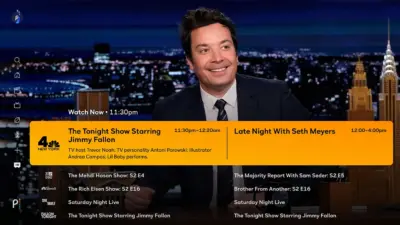
NBC airs all three current Chicago series consecutively on Wednesday nights, making it easier to follow crossover storylines when they occur. Chicago Med typically airs at 8 PM ET, followed by Chicago Fire at 9 PM ET, and Chicago P.D. at 10 PM ET. This scheduling makes Wednesday nights appointment television for One Chicago fans.
The consecutive scheduling is particularly important during crossover events, as storylines flow directly from one show to the next. Missing one episode during a crossover event can leave you confused about plot developments in subsequent episodes.
NBC’s website and app also provide access to recent episodes, though availability is typically limited to the most recent five episodes of each series. This option works well for staying current but isn’t suitable for viewers starting from the beginning of the franchise.
Digital Purchase Options
Amazon Prime Video, iTunes, Google Play, and Vudu offer digital purchase options for One Chicago episodes and seasons. While this option requires more investment, it provides permanent access to episodes and often includes special features not available on streaming platforms.
Digital purchase is particularly valuable for crossover episodes, as you can create custom playlists that maintain proper viewing order across multiple series. This approach works well for viewers who want to own their favorite episodes or who live in areas with limited streaming availability.
DVD and Blu-ray collections remain available for most seasons of all series. Physical media provides the most reliable access to episodes and often includes bonus features like behind-the-scenes content, cast interviews, and commentary tracks that enhance the viewing experience.
Tips for New Viewers
Starting the One Chicago franchise can feel overwhelming, but with the right approach, you’ll quickly find yourself immersed in this compelling universe. Here are practical strategies for beginning your journey through Chicago’s emergency services.
Recommended Starting Points
Chicago Fire Season 1 remains the best starting point for most viewers. Beginning with the foundation series allows you to understand the universe’s core concepts, meet key characters, and experience the franchise’s development as originally intended. The first two seasons of Chicago Fire can be watched independently, giving you time to decide whether you want to commit to the full multi-series experience.
If you’re primarily interested in police procedurals, you could start with Chicago P.D. Season 1, but you’ll miss important character development and relationship context that originates in Chicago Fire. The backdoor pilot episode “Let Her Go” (Chicago Fire Season 1, Episode 23) provides essential background for understanding Hank Voight and the Intelligence Unit.
Medical drama fans might be tempted to start with Chicago Med, but this approach isn’t recommended. Chicago Med assumes familiarity with characters and relationships established in the earlier series. Dr. Will Halstead’s introduction in Chicago Fire Season 3, Episode 19 provides crucial context for his character development in Chicago Med.
Quick Catch-Up Strategies
If you want to jump into current seasons without watching everything from the beginning, focus on key episodes that establish major characters and relationships. Watch the backdoor pilot episodes (Chicago Fire S1E23, Chicago Fire S3E19, Chicago P.D. S3E21) to understand how each series connects to the others.
Major crossover events provide excellent crash courses in franchise dynamics. The 2017 three-part crossover and the 2019 “Infection” trilogy showcase how all series work together while introducing key characters and relationships. These events are designed to be accessible to new viewers while providing maximum impact.
Character-focused episodes help new viewers understand relationship dynamics without requiring extensive backstory knowledge. Episodes featuring the Halstead brothers, Dawson siblings, or Molly’s Bar gatherings provide insight into how characters connect across series.
Understanding Without Watching Everything
You don’t need to watch every episode of every series to appreciate the One Chicago universe. Focus on episodes that interest you most while paying attention to crossover events and character development episodes. The franchise is designed to be accessible, with each episode providing enough context for new viewers to follow along.
Character relationship guides and franchise wikis can help fill in backstory gaps without requiring you to watch hundreds of episodes. Understanding basic relationships (Dawson siblings, Halstead brothers, Voight’s mentorship relationships) provides sufficient context for enjoying most episodes.
Seasonal premiere and finale episodes often provide recaps of major storylines and character developments, making them excellent entry points for new viewers. These episodes are designed to welcome back returning viewers while introducing new audiences to ongoing storylines.
Advanced Viewing Strategies
Once you’re committed to the One Chicago experience, advanced viewing strategies can enhance your enjoyment and help you manage the complexity of following multiple concurrent series.
Binge-Watching vs. Weekly Viewing
Binge-watching works well for older seasons where all episodes are available simultaneously. This approach allows you to maintain narrative momentum and better appreciate character development arcs that span multiple episodes. However, binge-watching can make crossover episodes feel less special since you’re not experiencing the anticipation that original viewers felt.
Weekly viewing of current seasons provides the authentic One Chicago experience, especially during crossover events. The anticipation between episodes and the communal experience of discussing episodes with other fans adds to the enjoyment. Wednesday night viewing sessions become appointment television that enhances the social aspect of fandom.
Hybrid approaches work well for many viewers. Binge older seasons to catch up quickly, then switch to weekly viewing for current seasons. This strategy allows you to experience the full franchise while maintaining the excitement of following ongoing storylines in real-time.
Managing Multiple Concurrent Seasons
Viewing schedules become essential when following multiple series simultaneously. Create a calendar that tracks episode air dates and crossover events to ensure you don’t miss important storylines. Many fans use spreadsheets or apps to track their progress across all series.
Note-taking helps track character developments and storylines that span multiple series. Keep track of relationship changes, character transfers between departments, and ongoing mysteries that affect multiple shows. This approach is particularly helpful during complex crossover periods.
Episode guides and viewing order websites provide valuable resources for maintaining proper chronology. Several fan-created resources track crossover episodes and provide recommended viewing orders that account for all series and special events.
Special Event Episode Coordination
Season finales and premieres often coordinate across all series, creating extended storylines that span multiple episodes. These events require careful attention to air dates and viewing order to maintain narrative flow. May sweeps periods typically feature the most ambitious crossover events.
Holiday episodes and special events sometimes air out of normal chronological order, requiring viewers to adjust their viewing schedules. Christmas episodes might air in December regardless of where they fit in the seasonal timeline, creating minor continuity challenges for chronological viewers.
Anniversary episodes and milestone celebrations often feature special crossover content or retrospective elements that enhance the viewing experience. These episodes frequently include callbacks to earlier seasons and special appearances by former cast members.
Common Viewing Mistakes to Avoid
Learning from other viewers’ mistakes can save you frustration and enhance your One Chicago experience. These common pitfalls can diminish your enjoyment of the franchise if you’re not aware of them.
Skipping Crossover Episodes
The biggest mistake new viewers make is skipping crossover episodes because they haven’t watched all the involved series. Crossover episodes often contain major character developments and plot points that affect future episodes across all series. Even if you’re not familiar with all the characters, watching crossover episodes provides valuable context for understanding the interconnected universe.
Backdoor pilot episodes are particularly important and should never be skipped. These episodes introduce new series and establish how they fit into the existing universe. Skipping Chicago Fire’s “Let Her Go” means missing Hank Voight’s introduction and the establishment of the Intelligence Unit.
Multi-part crossovers lose their impact when viewed out of order or with missing episodes. The 2017 three-part crossover tells a complete story that requires all three episodes to understand the full emotional and narrative impact. Watching only one or two parts leaves you with an incomplete understanding of the storyline.
Platform Confusion and Episode Availability
Different streaming platforms have different episode availability, leading to confusion about viewing order and missing episodes. Peacock has the most comprehensive collection, but other platforms might be missing key episodes or entire seasons. Always verify episode availability before starting a viewing session, especially during crossover periods.
International viewing presents additional challenges, as different countries have different streaming rights and availability. Episodes might air at different times or be available on different platforms, making it difficult to maintain proper viewing order.
Episode numbering can vary between platforms, with some services counting special episodes or crossovers differently. Always verify episode titles and air dates rather than relying solely on episode numbers when following viewing guides.
Missing Character Introductions
Character introductions often occur in episodes that seem unimportant to the main storyline, leading viewers to skip them and miss crucial context for future episodes. Dr. Will Halstead’s introduction in Chicago Fire provides essential background for understanding his character in Chicago Med.
Recurring characters might appear in multiple series before becoming main characters, making their early appearances important for understanding character development. Antonio Dawson’s evolution from Chicago Fire guest character to Chicago P.D. main character to Chicago Justice lead demonstrates how the franchise develops characters across multiple series.
The Future of the Chicago Franchise
The One Chicago franchise continues to evolve, with ongoing series maintaining strong ratings and new possibilities always on the horizon. Understanding the current status and future potential helps viewers appreciate where the franchise is heading.
Current Status of All Series
Chicago Fire remains the flagship series and shows no signs of slowing down. The show continues to attract strong ratings and maintains its position as the foundation of the One Chicago universe. Recent seasons have focused on evolving character relationships while maintaining the high-stakes emergency scenarios that made the series successful.
Chicago P.D. has successfully navigated cast changes while maintaining its core identity. The Intelligence Unit continues to tackle complex cases that often connect to the other series, and the show’s willingness to address contemporary social issues keeps it relevant and engaging.
Chicago Med has found its footing as an essential part of the franchise, with medical storylines that naturally connect to fire and police emergencies. The series has developed its own identity while maintaining strong connections to the other shows through character relationships and crossover events.
Potential New Additions
Dick Wolf has expressed interest in expanding the One Chicago universe with additional series focusing on other aspects of city services. Potential concepts include series focusing on emergency dispatchers, social services, or other first responder organizations. Any new additions would likely follow the established pattern of introduction through backdoor pilots in existing series.
Spin-off possibilities exist for popular characters who might anchor their own series. The franchise’s success with character development across multiple shows demonstrates that audiences are willing to follow compelling characters into new settings and situations.
International versions of the Chicago concept have been discussed, potentially bringing the interconnected emergency services format to other cities and countries. These versions would likely maintain the core concept while adapting to local emergency service structures and cultural contexts.
Staying Updated with the Franchise
Official NBC sources provide the most reliable information about renewal decisions, casting changes, and special events. Following NBC’s social media accounts and visiting their official websites ensures you receive accurate information about scheduling changes and new developments.
Fan communities and social media groups offer valuable resources for staying current with franchise news and connecting with other viewers. These communities often provide viewing guides, episode discussions, and updates about cast and crew changes.
Entertainment news sources regularly cover the One Chicago franchise, providing insights into behind-the-scenes developments, ratings performance, and future planning. Following entertainment reporters who specialize in television helps you stay informed about industry developments that might affect the franchise.
Quick Reference Resources
To help you navigate the One Chicago universe effectively, here are essential resources and tools for tracking your viewing progress and staying organized.
Complete Viewing Order Table
| Year | Chicago Fire | Chicago P.D. | Chicago Med | Chicago Justice |
|---|---|---|---|---|
| 2012-2013 | Season 1 | – | – | – |
| 2013-2014 | Season 2 | – | – | – |
| 2014 | Season 3 | Season 1 | – | – |
| 2014-2015 | Season 3 | Season 1 | – | – |
| 2015-2016 | Season 4 | Season 3 | Season 1 | – |
| 2016-2017 | Season 5 | Season 4 | Season 2 | Season 1 |
| 2017-2018 | Season 6 | Season 5 | Season 3 | – |
| 2018-2019 | Season 7 | Season 6 | Season 4 | – |
| 2019-2020 | Season 8 | Season 7 | Season 5 | – |
| 2020-2021 | Season 9 | Season 8 | Season 6 | – |
| 2021-2022 | Season 10 | Season 9 | Season 7 | – |
| 2022-2023 | Season 11 | Season 10 | Season 8 | – |
| 2024 | Season 12 | Season 11 | Season 9 | – |
Progress Tracking Checklist
Create a personal checklist to track your progress through the One Chicago universe:
- Chicago Fire Seasons 1-2: Foundation episodes
- First Crossover Period: Fire S3 + P.D. S1
- Medical Addition: Fire S4 + P.D. S3 + Med S1
- Justice Integration: Fire S5 + P.D. S4 + Med S2 + Justice S1
- Current Era: Fire S6+ + P.D. S5+ + Med S3+
- Major Crossover Events: Three-part storylines
- Character Development Episodes: Family relationships and transfers
Essential Crossover Episodes List
Keep this list handy for the most important crossover episodes:
- Chicago Fire S1E23: “Let Her Go” (P.D. backdoor pilot)
- Chicago Fire S3E19: “I Am the Apocalypse” (Med backdoor pilot)
- Chicago P.D. S3E21: “Justice” (Justice backdoor pilot)
- Fire S5E15 + P.D. S4E16 + Justice S1E1: Warehouse fire trilogy
- Fire S8E4 + Med S5E4 + P.D. S7E4: Infection outbreak trilogy
- 2025 Crossover: “In the Trenches” trilogy
Conclusion:
The One Chicago universe offers one of television’s most rewarding viewing experiences when approached with proper preparation and understanding. By following this comprehensive guide, you’ll be able to navigate the complex interconnections between Chicago Fire, Chicago P.D., Chicago Med, and Chicago Justice while appreciating the careful world-building that makes this franchise special.
Remember that the journey through Chicago’s emergency services is meant to be enjoyed, not endured. Don’t feel pressured to watch every episode if certain storylines don’t interest you, but do pay attention to crossover events and character development episodes that enhance the overall experience. The One Chicago universe rewards viewers who invest in its interconnected storytelling, providing rich character relationships and compelling storylines that span multiple series and years.
Whether you’re just starting your journey through Firehouse 51, the Intelligence Unit, Gaffney Chicago Medical Center, or planning to experience the complete franchise chronologically, this guide provides the foundation you need for maximum enjoyment. Welcome to the One Chicago universe – you’re in for an incredible ride through the streets, firehouses, hospitals, and courtrooms of one of television’s most compelling fictional cities.
Frequently Asked Questions About Watching Chicago Series in Order
Q 1: Do I need to watch all Chicago series to understand the storylines?
A: No, you don’t need to watch all series to enjoy individual shows. Each Chicago series can be watched independently and tells complete stories. However, watching all series in chronological order enhances your understanding of character relationships, crossover events, and the interconnected storylines that make the One Chicago universe special.
Q 2: Which Chicago series should I start with?
A: Chicago Fire Season 1 is the best starting point for most viewers. It’s the foundation series that established the One Chicago universe and introduces key characters and locations that appear throughout the franchise. Starting with Chicago Fire allows you to experience the universe’s development as originally intended.
Q 3: How many Chicago series are there?
A: There are four series in the One Chicago franchise:
- Chicago Fire (2012-present)
- Chicago P.D. (2014-present)
- Chicago Med (2015-present)
- Chicago Justice (2017, cancelled after one season)
Viewing Order Questions
Q 4: What’s the correct chronological order to watch Chicago series?
A: The chronological viewing order is:
- Chicago Fire Seasons 1-2 (standalone)
- Chicago Fire Season 3 + Chicago P.D. Season 1 (alternating)
- Chicago Fire Season 4 + Chicago P.D. Season 3 + Chicago Med Season 1
- Continue with all three series plus Chicago Justice Season 1 in 2017
- Current era: Chicago Fire, Chicago Med, and Chicago P.D. (three series)
Q 5: Can I skip Chicago Justice since it was cancelled?
A: While Chicago Justice only lasted one season, it contains important crossover episodes and character developments, particularly for Antonio Dawson. If you’re watching for completeness, include Chicago Justice. If you’re focusing on ongoing series, you can skip it, but you’ll miss some character context.
Q 6: How do I handle crossover episodes?
A: Crossover episodes should be watched in the order they aired, even if it means switching between series. Major crossovers are typically announced and have clear viewing orders. For example, the 2017 warehouse fire crossover requires watching Chicago Fire S5E15, then Chicago P.D. S4E16, then Chicago Justice S1E1.

